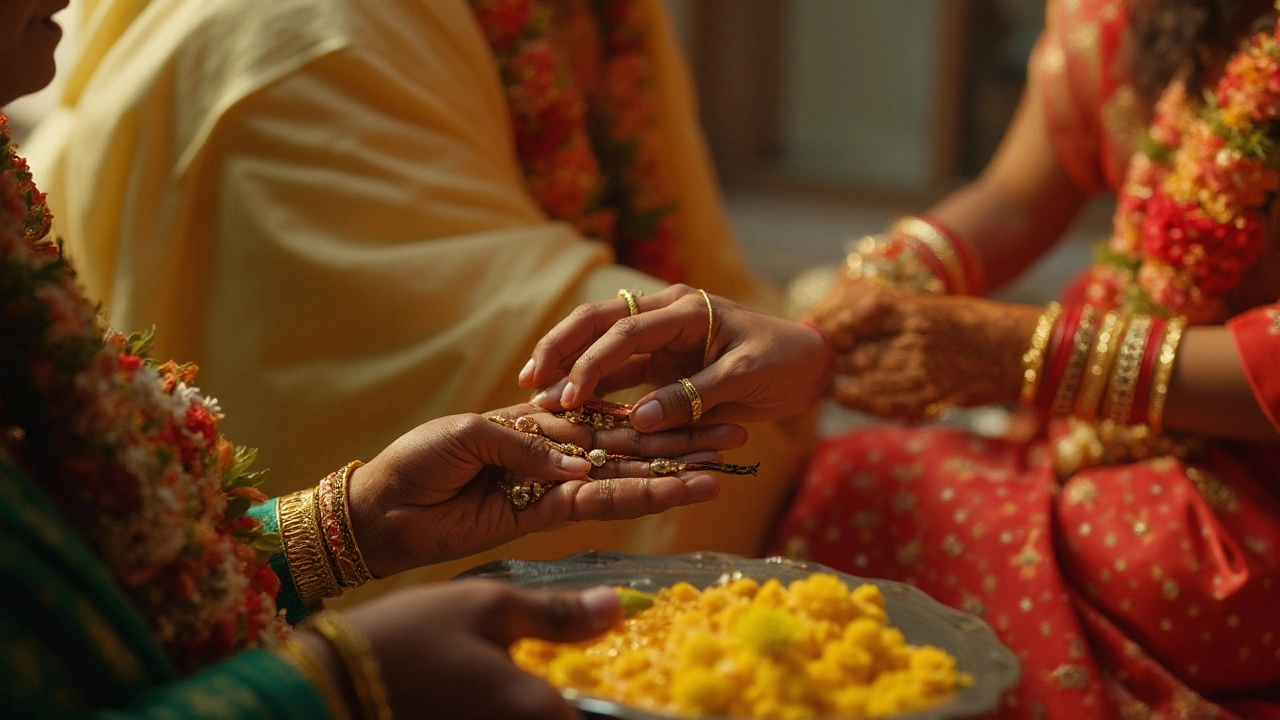
Quick answer and regional breakdown: who gifts, who ties, and how the mangalsutra is presented in different Indian communities, plus etiquette and modern options.
When you think about Hindu wedding mangalsutra, a sacred necklace that marks a woman's married status and carries blessings for her life. Also known as mangalsutra, it blends cultural symbolism with everyday wearability. Mangalsutra designs range from simple single-chain pendants to elaborate multi‑strand pieces with motifs like kalash, peacock or om and often reflect regional tastes. Gold purity is measured in karats (22K or 24K) and hallmarks that guarantee authenticity is a key factor when choosing a piece that lasts daily. Finally, a buying guide helps you compare designs, check hallmarks, and match the necklace to your budget and style ensures you get value without compromising tradition.
Understanding the cultural significance of the mangalsutra opens the door to smart choices. In Hindu rituals, the groom ties the mangalsutra around the bride’s neck during the sacred saptapadi ceremony, symbolizing a lifelong bond. This act links the necklace to concepts of protection, prosperity, and fidelity. Because the piece stays on for years, durability matters – that’s where gold purity and design robustness intersect. A high‑karat gold core resists tarnish, while sturdy clasps keep the pendant secure during daily chores.
First, decide which design speaks to you. Classic single‑chain designs with a tiny pendant suit understated tastes, whereas layered chains with intricate motifs appeal to those who love statement pieces. Second, verify the gold hallmark – look for stamps like 22K 916 or 24K 999 to confirm purity. Third, think about the weight; heavier pieces often mean more gold but can be uncomfortable for some. Fourth, factor in the price per gram of gold; market rates fluctuate, so timing your purchase can save money. Lastly, consider the seller’s reputation – reputable jewelers provide certification and after‑sale service, which is vital for a lifelong accessory.
Another layer of decision‑making involves who typically buys the mangalsutra. Traditionally, the bride’s family purchases it, but modern couples often split costs or choose to buy together, reflecting shifting financial dynamics. Knowing who pays can influence budgeting and design preferences. For example, families may favor traditional motifs, while couples might lean toward contemporary styles that blend gold with other metals or gemstones.
Beyond the necklace itself, the mangalsutra ties into broader wedding jewelry customs. It often complements other pieces like bangles, earrings, and necklaces, creating a cohesive bridal look. Understanding how the mangalsutra fits with these accessories helps you plan a balanced ensemble that looks elegant in photos and comfortable at the venue.
Finally, remember that a mangalsutra isn’t just a decorative item; it carries emotional weight. Choosing a design that reflects personal values—whether that's a simple gold thread for minimalism or a detailed pendant featuring a family deity—adds a layer of meaning to the purchase. With the right mix of design, purity, and price, you’ll end up with a piece that honors tradition while fitting modern life.
Below, you’ll find a curated set of articles covering everything from ideal design choices and gold hallmarks to cultural rituals and practical buying tips. Dive in to get the details you need before you pick the perfect Hindu wedding mangalsutra for your special day.

Quick answer and regional breakdown: who gifts, who ties, and how the mangalsutra is presented in different Indian communities, plus etiquette and modern options.